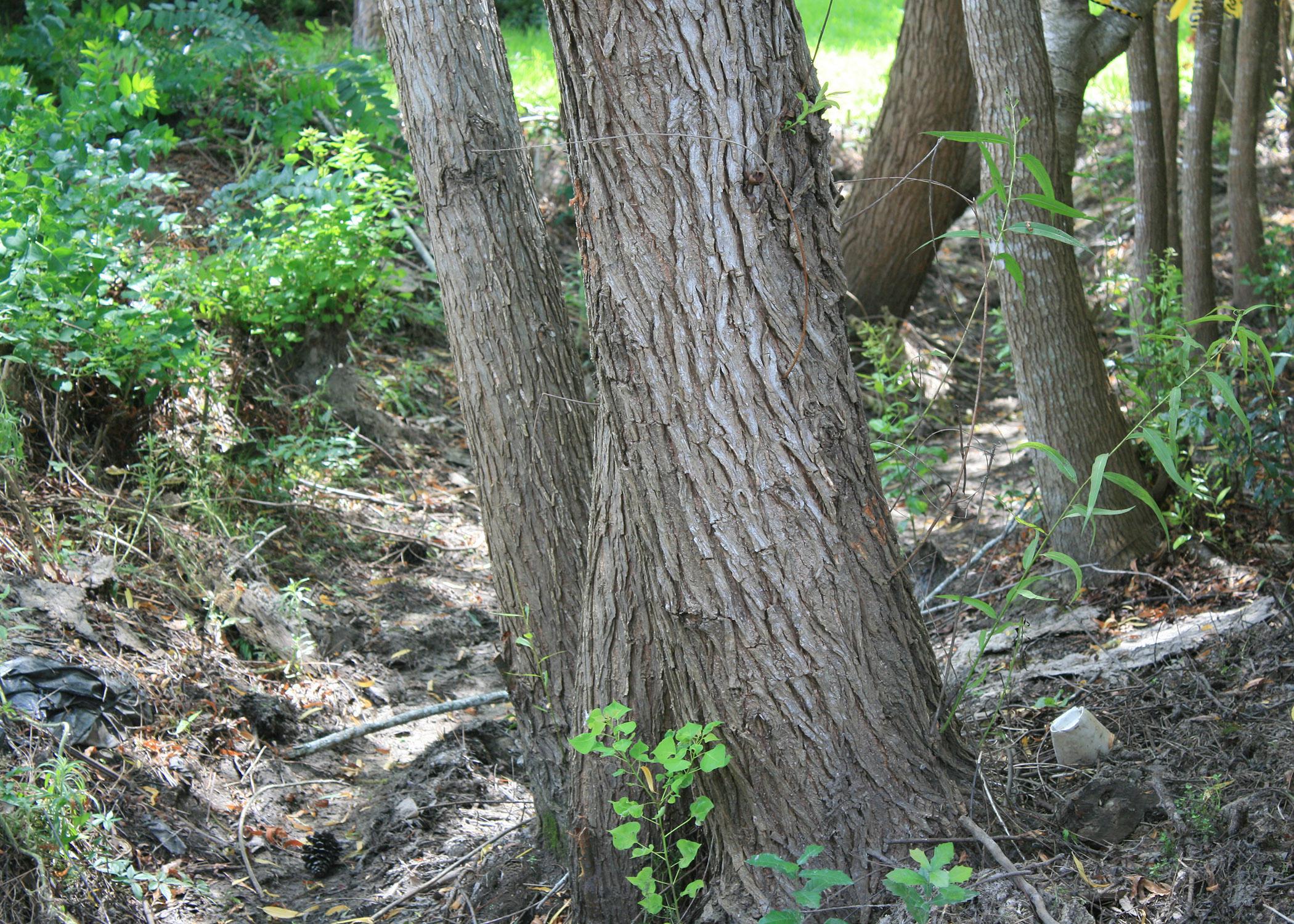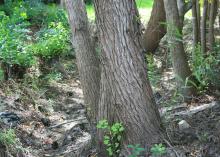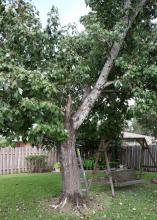Information Possibly Outdated
The information presented on this page was originally released on July 8, 2013. It may not be outdated, but please search our site for more current information. If you plan to quote or reference this information in a publication, please check with the Extension specialist or author before proceeding.
Consider recovery options for storm-damaged trees
Mississippi landscapers often see favorite trees fall victim to lightning, strong winds and other elements, especially during tropical storm season, leaving the owners to make hard decisions on the trees’ future health.
Typical damage includes wounds, split branches, exposed roots, various degrees of leaning trunks, and broken and torn limbs. In many cases, a damaged tree must be removed and replaced.
Limb damage affects the shape and general health of the tree. It must be pruned properly to avoid additional damage. Small branches and limbs, typically one inch or less in diameter, can be removed with a single cut. Remove them at the branch collar to help the tree heal. The branch collar is a slightly raised area around the point where the branch connects to the trunk.
Many homeowners don’t believe that trees can heal after storm damage. Trees don’t heal in the same sense that we do after an injury. Bandages play no role in a tree’s healing process. A process called compartmentalization occurs in a tree’s response to injury, strengthening and sealing off the area around the injury.
Never use a treatment such as paint, caulk, cement or any other material to cover a tree wound. These attempts to bandage the wound will trap disease organisms. Always trim damaged, jagged branches to an even surface, using a wood chisel if needed. This precaution will allow the tree to form callus tissue around the edges of the wound and eventually seal off the damaged area.
To remove large, heavy limbs greater than one inch in diameter, use the drop-cut method (1-2-3 technique) to avoid ripping bark and wood. This method involves first removing the bulk of the damaged limb, then making a cut on the underside of the limb near the trunk, and finally cutting from the top down toward the second cut.
Never cut flush with the trunk or branch from which you are pruning. Removing tree limbs is dangerous work. If you’re unsure about your ability to perform the proper repairs, hire a certified arborist for the job. These trained professionals can treat and repair many types of damage and can save many trees.
Because of the twisting and bending caused by high winds, many branches and trunks will split. Certified arborists can repair this damage using mechanical means such as bolts and cables. I know it sounds pretty easy, but because of the danger involved, certified arborists must perform these repairs.
Continue to care for all trees after repairs are completed. Check soil moisture. Mulching may be needed to conserve moisture as the dry fall months approach. Avoid severe pruning. Prune a damaged tree just enough to balance any loss of roots. Cut out broken, diseased and malformed branches, and give the tree a desirable shape.
During the stormy summer months, keep drainage areas clear to keep the landscape in good shape. These pathways keep water flowing and draining away from gardens and landscapes. Many municipalities keep these easements clear because grasses and trees will grow in them throughout the year. Some cities won’t remove trees from drainage easements. In these cases, don’t allow small trees to become established. If left alone, they will grow into large trees and become potential landscape and property liabilities during extreme weather.
For more information on repairing trees damaged in storms refer to MSU Extension Information Sheet 1355 “Repairing Storm-damaged Shade, Ornamental, and Fruit Trees,” which is also available from your local county Extension office.












